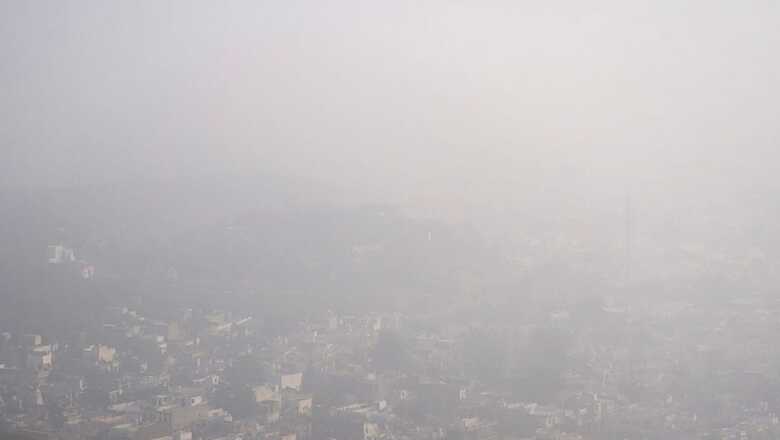
views
Residents of Delhi woke up to a chilly Christmas morning, with a blanket of fog enveloping the city. With a thick layer of fog bringing down visibility, flight operations were affected at Indira Gandhi International Airport in Delhi, prompting authorities to ask passengers to contact airlines for assistance.
“While landings and take-offs continue at Delhi Airport, flights that are not CAT III compliant may get affected. Passengers are requested to contact the airline concerned for updated flight information. Any inconvenience caused is deeply regretted,” the airport authorities said in an advisory for passengers.
As per the latest report, eight flights to Delhi were diverted between 6:00 am to 9:00 am. Of these, seven were diverted to Jaipur and one to Ahmedabad.
As the cold wave tightened its grip on North India, Delhi woke up to an even colder morning. The temperature in the city was recorded at 9.4 degrees Celsius in the morning, according to the India Meteorological Department (IMD).
Visibility dropped to 125 meters in several parts of Delhi, and most parts of the National Capital Region (NCR) also experienced low visibility. According to the India Meteorological Department, the visibility around Palam in Delhi was zero at 8.30 am.
On Sunday, the minimum temperature had settled at 9.1 degrees Celsius. Due to the chilling cold, many sought refuge at night shelters in various parts of the national capital.
Additionally, Delhi’s air quality on Monday remained in the ‘very poor’ category, with the Air Quality Index (AQI) hovering around 400, according to data provided by the Central Pollution Control Board (CPCB). An AQI between 0 and 50 is considered good, 51 and 100 satisfactory, 101 and 200 moderate, 201 and 300 poor, 301 and 400 very poor, 401 and 450 severe, and above 450 severe-plus.In response to the prevailing conditions, all non-essential construction work has been banned in the Delhi-National Capital Region.
Similar scenes were also witnessed in other parts of north India, including Jammu and Kashmir’s Srinagar, where fog affected the day-to-day life of residents.
Minimum temperatures continued to decline in most parts of Kashmir for a second consecutive night even as dense fog disrupted daily life in the Valley early on Monday. Srinagar — Jammu and Kashmir’s summer capital — recorded a low of minus 2.3 degrees Celsius, a slight decrease from the previous night’s minus 2.1 degrees, they said.
The Met department said the weather is likely to remain mainly dry till the end of the month.
The flow of traffic was lower than usual in the morning while vehicles were seen moving at slow speeds due to the reduced visibility. “The visibility in Srinagar at 8.30 am was 91 metres due to the fog cover. Motorists should drive carefully due to the low visibility,” an official of the local Met office said.
Biting cold, dense fog grips Jammu and Kashmir’s Srinagar. Thick layer of fog decreases visibility #JammuAndKashmir #Winters #WinterSeason #Srinagar #Fog #DenseFog #JammuKashmir #Cold pic.twitter.com/cELQ1o5DRT— News18 (@CNNnews18) December 25, 2023
Kashmir is currently under the grip of ‘Chilla-i-Kalan’ — the 40-day harshest winter period when a cold wave grips the region and the temperature drops considerably, leading to the freezing of water bodies, including the Dal Lake, as well as water supply lines in several parts of the Valley.
The chances of snowfall are the highest during this period and most areas, especially the higher reaches, receive heavy snow. ‘Chilla-i-Kalan’ will end on January 31.
However, the cold conditions will continue after that with a 20-day ‘Chilla-i-Khurd’ (small cold) and a 10-day ‘Chilla-i-Bachha’ (baby cold)

















Comments
0 comment